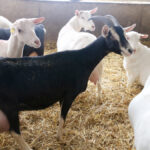Groups administering cash advances are expecting a flood of applications from cash-strapped producers grappling with the sky-high costs of putting a crop in the ground.

“We certainly think there is going to be demand because of how nasty last year was,” said Dave Gallant of the Canadian Canola Growers Association.
“There’s going to be so many farmers who didn’t get a crop off who’ve had a really tough winter because of a lack of cash flow.”
The prospect of more farmers rushing to get the loans prompted his organization to throw open the application window earlier this year (in mid-February instead of early March). Alberta Wheat (which operates FarmCash) also started accepting applications earlier (on March 1 versus mid-March).
Gallant said his association had its program ready to roll as soon as the federal government announced the advance rates, which are based on what AgCanada expects each commodity to sell for. Although the advance rates are set at roughly half the forecasted selling price, they are up sharply for many crops.
“The rates are substantially higher on some grains, and higher across the board,” said Gallant. “On canola, last year the advance rate was $252 a tonne. This year, it’s $363 a tonne… There’s an opportunity for farmers to get a lot more money this year because of the increased rates by the federal government for the same acres or the same tonnage that they grew last year.”
However, the maximum cash advance remains at $1 million. Still, Syeda Khurram, CEO of Alberta Wheat’s FarmCash program, is expecting to issue more cheques and bigger ones.

“We’re experiencing significant increase in our calls that we’ve been getting from producers,” she said. “We’re expecting an increase in advances, as farmers are in need to sustain their cash flow.”
The rising cost of fertilizer and other inputs is putting the squeeze on farmers, added Gallant.
“When input costs, such as seed and fertilizer and fuel go up, there’s always an increased demand for the program,” he said. “You need the cash to put the product in the ground, and you can’t generate cash until you actually sell. So this gives farmers access to cash, so they don’t have to borrow from other sources. It allows them to pay bills, which are becoming increasingly large.”
Read Also

An unbelievable tale of a lost engagement ring
After nearly 50 years, a southern Alberta farmer finds her wedding ring in an unusual place.
The higher advance rates are badly needed, he added.
“We’re very happy that the government increased the rates the way they did, to acknowledge the fact that farmers are facing increased input costs this year — fairly dramatic increased costs,” said Gallant.
That money will start flowing out the door at the start of next month.
If producers “get the application in and if everything is completed, we’ll be depositing that money into their account on April 1,” he said. Last year, the canola growers’ association deposited more than $200 million into the account of 1,500 farmers on April 1.
The first $100,000 is interest free and both FarmCash and the canola growers’ program charge prime rate minus 0.75 per cent on the remainder. (There are a large number of program administrators, which vary by province and commodity. For a list, go to the Advance Payments Program page on the Government of Canada website)
The discount, interest-free portion and the low prime rate (which was 2.45 per cent as this paper was going to press) makes for a very cheap interest rate.
“If producers are applying for a million dollars, producers can take advantage of the blended rate, which is 1.52 per cent annually,” Khurram noted.
(However, the prime rate is expected to rise, perhaps as early as March 2 when the Bank of Canada may increase the interest rate on money it loans to banks.)

The loans must be repaid when the crop or livestock are sold. For grains and oilseeds, the maximum loan period is 18 months and for livestock, it is 24 months. Cash advances are also available for other commodities, such as honey, vegetables and special crops.
The program works well for newer producers, said Gallant.
“The only collateral required on the program is the inventory and crop insurance,” he said. “It gives a lot of flexibility for new and starting producers.”
Neither the canola growers’ association or FarmCash charge administration fees, and this is the second year that FarmCash is available to producers across Western Canada.
















